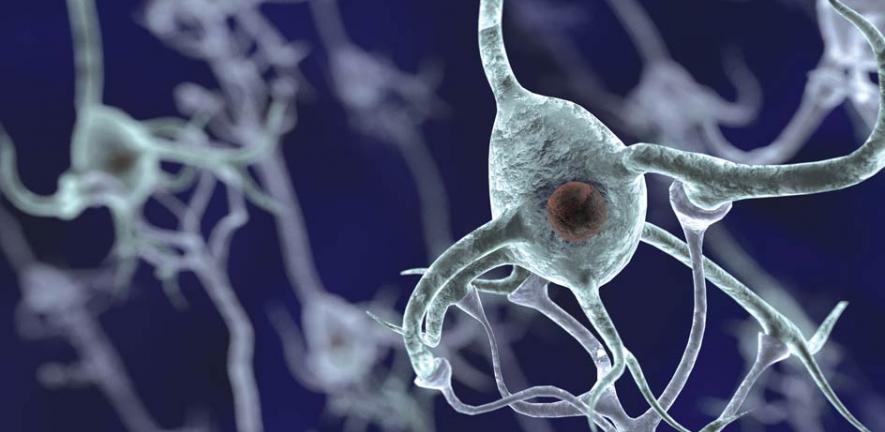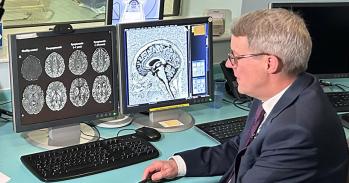
Cambridge neurologists have shown that an antibody used to treat leukaemia also limits and repairs the damage in multiple sclerosis.
Cambridge neurologists have shown that an antibody used to treat leukaemia also limits and repairs the damage in multiple sclerosis.
The results of this latest study have shown that the drug must be given early, before the destruction of the myelin sheath has advanced to the point that secondary damage to the underlying nerves continues unabated.
Multiple sclerosis (MS) affects almost 100,000 people in the UK and several million worldwide, many of whom develop the illness between the ages of 20 and 40. Individuals at first experience episodes that transiently disturb functions that healthy people take for granted: seeing, walking, feeling, thinking and emptying the bladder. Later, the episodes are replaced by secondary progression and, as the disabilities mount up, the illness begins to threaten many aspects of daily living.
MS results when the body mounts an autoimmune attack on nerve fibres, particularly targeting the myelin sheath that envelops them and interfering with the passage of the nerve impulse through the spinal cord and brain. The prime orchestrator of this damage has been identified – a type of white blood cell known as the T cell – but exactly how tissue injury occurs, why there is a characteristic relapsing–remitting pattern followed by secondary progressive disease, and how to treat the illness effectively, have remained elusive.
Made in Cambridge
The results of a recent study raise new hopes for patients with MS. A three-year, Phase 2 clinical trial with Alemtuzumab (also known as Campath), in which over 300 patients were treated, showed that not only was the advance of disease halted but, remarkably, many patients started to get better – perhaps due to brain repair. Professor Alastair Compston and Dr Alasdair Coles in the Department of Clinical Neurosciences found that the drug reduced the relapse rate by an additional 74% compared with the standard treatment, and the risk of accumulating fixed disability also fell by 71%.
These results provide a new installment in what has been a fascinating history for an antibody made in Cambridge in 1979 by Professor Herman Waldmann in the Department of Pathology. Campath was the first antibody to be ‘humanised’ – a technique pioneered by Dr Greg Winter at the Medical Research Council Laboratory of Molecular Biology that minimises the risk of the drug being rejected as foreign when given to patients. Because the drug destroys white blood cells, it has been principally used to treat adult leukaemia, a disease in which abnormal white blood cells build up and fatally ‘crowd out’ normal, healthy blood cells. This lymphocyte-destroying ability is now being exploited to destroy the perpetrators of havoc in MS.
Surprisingly, given that the drug is known to destroy white blood cells, infections were only slightly more common after treatment with Campath. Instead, the development of another autoimmune disease – usually affecting the thyroid gland – proved to be the major, and unexpected, complication.
All in the timing
Although Campath’s potential as a treatment for MS was first considered 18 years ago in Cambridge, early attempts to treat patients who had already reached the secondary progressive stage failed to improve their worsening disabilities. It seems that it’s all in the timing. The results of this latest study have shown that the drug must be given early, before the destruction of the myelin sheath has advanced to the point that secondary damage to the underlying nerves continues unabated. Not only does this strategy head off sustained accumulation of disability but it also allows some existing damage to get better, a factor not seen in any previous clinical trials. Expectations are high that the Phase 3 trials, now in progress, will lead to drug registration within a few years.
For more information, please contact the author Professor Alastair Compston (alastair.compston@medschl.cam.ac.uk) at the Department of Clinical Neurosciences. This research was published in New England Journal of Medicine(2008) 359, 1786–1801 and was funded by Genzyme and Bayer Schering Pharma AG.
This work is licensed under a Creative Commons Licence. If you use this content on your site please link back to this page.





